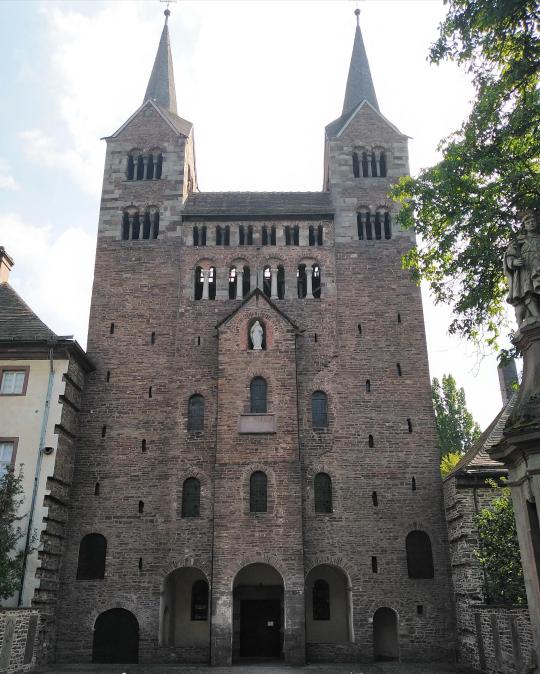#corvey
Note
for name and pronoun validation i have two requests if that's okay? we have two new system members that are having some trouble with pronouns!
first one is named Vyren, petal/petals and bloom/blooms pronouns are the ones Vyren wants to try, petals a deer hybrid and loves flowers, especially orchids!
second is Corvey, caw/caws and (cor/corv/corvs/corvidself)
Corvey is a crow/raven hybrid interested in corvidcore/crowcore, night, and vulture culture!
alrighty!!
this is vyren! petal has a super cool name! i heard bloom was a deer hybrid which is so snazzy of petal! blooms other interests include flowers, especially orchids, which is awesome! i bet petal is really good at keeping plants alive. bloom might get along with my headmate lacey, she also likes flowers! i hope vyren has a really good day and knows how cool bloom is.
and this over here is corvey!! i also think caw has a really cool name and i'm in love with corvs corvid pronouns. i think cor would get along great with another headmate of mine named crowe! caw is a crow/raven hybrid which is really goddamn cool of corv, and caw likes corvidcore, the night, and vulture culture!! caw seems really cool and i hope corv takes care of cawself.
#name checks#pronoun checks#pronoun validation#name validation#corvey caw/cor#cor/corv#caw/caws#caw/cor#corvey#vyren petal/bloom#petal/bloom#petal/petals#bloom/blooms#vyren#the galaxy sys
7 notes
·
View notes
Text
Das war kein Multiple-Choice-Test
Diese Woche arbeite ich von 09:00 bis 18:00 Uhr. Meine Arbeit es im Augenblick, bestimmte Abläufe zu lernen und ein neues Warenwirtschaftssystem kennenzulernen. Bis jetzt habe ich mich noch nicht bis auf die Knochen blamiert. Ich sehe das als Erfolg.
Wie ich an diese Stelle gekommen bin, ist eine ganz lustige Geschichte. Alors, eigentlich nicht. Ich hatte im Bus in meiner Jackentasche nach…
View On WordPress
1 note
·
View note
Photo
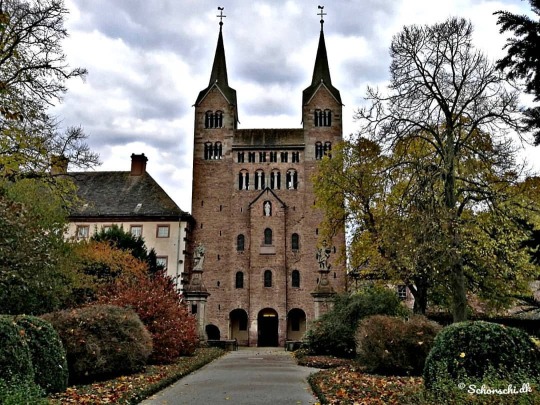
Die Abteikirche des Schloss Corvey #höxter #schlosscorvey #corvey #weserbergland #schloss #weltkulturerbe #unesco #welterbecorvey #welterbe #abteikirche #kirche #klosterkirche #benediktinerabtei #abteikirchecorvey #westwerkcorvey #westwerk #klostercorvey #historisch #history #church #herbst #baum #bäume #herbstfarben #herbstfärbung #gebäude #architecture #architektur #deutschland #germany https://www.instagram.com/p/CHWwFnWhq-n/?igshid=NGJjMDIxMWI=
#höxter#schlosscorvey#corvey#weserbergland#schloss#weltkulturerbe#unesco#welterbecorvey#welterbe#abteikirche#kirche#klosterkirche#benediktinerabtei#abteikirchecorvey#westwerkcorvey#westwerk#klostercorvey#historisch#history#church#herbst#baum#bäume#herbstfarben#herbstfärbung#gebäude#architecture#architektur#deutschland#germany
0 notes
Text
Europa-Radweg R1: Von Dassel nach Nieheim
12. Oktober 2022: 65 Klometer
Mann, ist das kalt! Als wir heute Morgen um 8:00 Uhr in Dassel losfahren, sind es nur zwei Grad. Überall liegt Rauhreif, die Nebel wallen … und die Finger verursachen unendliche Quallen!
Die lächerlichen Fahrrad-Fingerhandschuhe vom Aldi – komplett entbehrlich! Eigentlich wäre hier die Schottland-Ausrüstung angesagt. Das nächste Mal machen wir es besser!
Wir…
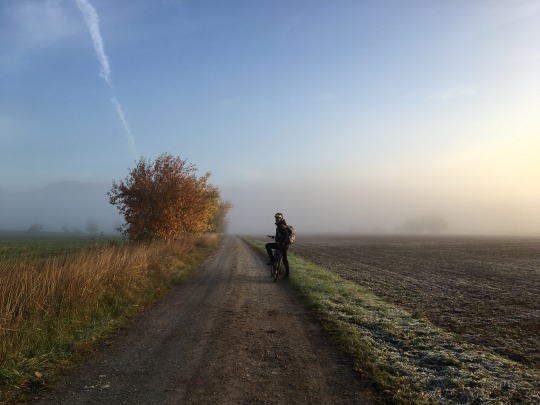
View On WordPress
0 notes
Photo

an old window in #corvey #schlosscorvey #klostercorvey #höxter #nordrheinwestfalen #unescoworldheritage #unescoweltkulturerbe #karolinger https://www.instagram.com/p/ChnSXy8MGCb/?igshid=NGJjMDIxMWI=
#corvey#schlosscorvey#klostercorvey#höxter#nordrheinwestfalen#unescoworldheritage#unescoweltkulturerbe#karolinger
1 note
·
View note
Video
Schloss Corvey by Matthijs Bremer
0 notes
Text
Fotoshooting Outdoor mit Henrike – SET 02
Fotoshooting Outdoor mit Henrike – SET 02
Fotoshooting an alter Klosterruine in Höxter
Henrike und ich haben uns erstmals zu einem gemeinsamen Fotoshooting verabredet. Wir haben ein gutes Wetterfenster genutzt und uns an der Ruine Tom Roden getroffen. Beim Outdoorshooting in Höxter haben wir auf einer Wiese Aufnahmen mit einer lebensfrohen Ausstrahlung kreiert. Der Termin war folglich von Erfolg gekrönt.
Selbstsichere junge Frau im…

View On WordPress
0 notes
Text
HOW SHE SHOWS HER LOVE TO YOU



Tw: +18
Words of affirmation
It's natural for Larissa to just drop some compliments from time to time. She can't avoid it, you're her person, and that's not taken for granted.
Larissa likes how you react, all flustered and smiling widely, it is so smooth for her. Seeing you like that gives her the courage to hang on in her busy life. Just to get back to you tomorrow.
She hates it when you talk bad about yourself. When you do so, she stops you covering your face with kisses and reassures you.
She has some lovey-dovey nicks for you, but these are the ones she uses the most:
Dear
Sweety
Sunshine
Lighting star
Physical touch
Ok, with the type of workaholic we all know this woman is, Larissa commonly collapses on you by past midnight. The touch of your skin drives her to heaven, not only sexually, but also mentally. So Larissa is quite touchy every day, always looking for your hand or waist unconsciously. A really touch-starved baby. Well, a big touch-starved baby.
Sometimes, she doesn't really know what's going on with her, so she just gets lost in your arms and nuzzles your neck with her nose, before kissing you passionately. It really calms her down and lets her think about the problem she has.
And, if you can't sleep, she presses against you, lulling you to relax you.
Acts of service
She thinks of you a lot throughout the day, so sometimes, if she arrives and you are still working on your laptop, she usually makes you tea or something of your preference. Or, if you are sporty, making you the protein shakes. Even if you are just doing your hobbies, she would worry about asking how are you doing and encouraging you to continue with those ideas, even if you don't see their end.
Gift giving
Even if she prefers to spend your free days cozy together at home, she also likes going out, to the shops that you two like at Nevermore. And, sometimes, the things that got your eye appear in her hands or on bed days later.
Quality time
Larissa, with her job as Director of Nevermore, can't save that much time she'd like to be with you. But she covers you with love all the time she has. When she is doing her duties, Larissa can't help but think of the evening, when she'll get out of there and come back to you.
#gwendoline christie#larissa weems#fanfic#wednesday netflix#larissa weems x reader#oneshot#gwen christie#principal larissa weems#principal weems#gwendolineuniverse#larissa weems fanfic#lesbian#larissa x reader#larissa weems x you#larissa weems x laurel gates#larissa weems wednesday#larissa weems smut#gwendoline christie smut#Corvey's chest#ire67#dating#dating hcs#ikea date#x reader#jenna ortega x reader#headcanons#wednesday addams#gender neutral reader#jenna#love langauges
290 notes
·
View notes
Text
rain working at a tavern and always getting so happy when dew stops by. he has a little crush on his number one customer. he always halfs the price on everything for dew but he somehow never notices. oblivious little fucker.
i will be drawing this later.
#im eepy#nighttime thoughts#ghost#the band ghost#dewdrop#dewdrop ghoul#dew#raindrop#rain ghoul#rain#corvey thinks
255 notes
·
View notes
Text
i have not been able to stop thinking about punz, tina, and foolish's corvid? corvey? corvette? conversation. its living in my brain now
#if i remember i might go back and try to find it to clip it#but just the utter confusion that was going on right then was so funny#also im still confused if foolish thought corvette was pronounced corvey or if he was just saying something else that i didnt get
0 notes
Text
the ideal dynamic for corvus and talus is jessie and james from pokemon mixed with the simpsons “let me kill for you marge”
#talus: please let me kill for you corvey corvus; used to his husbands shit: sure whatever have fun honey#both have at least one phd nary a brain cell between them. tragic#talus would suggest explosives for a solution to a problem and corvus would light the fuse#spark prattles about her ocs#oc: Corvus Faladrin#oc: Talus Faladrin
0 notes
Text
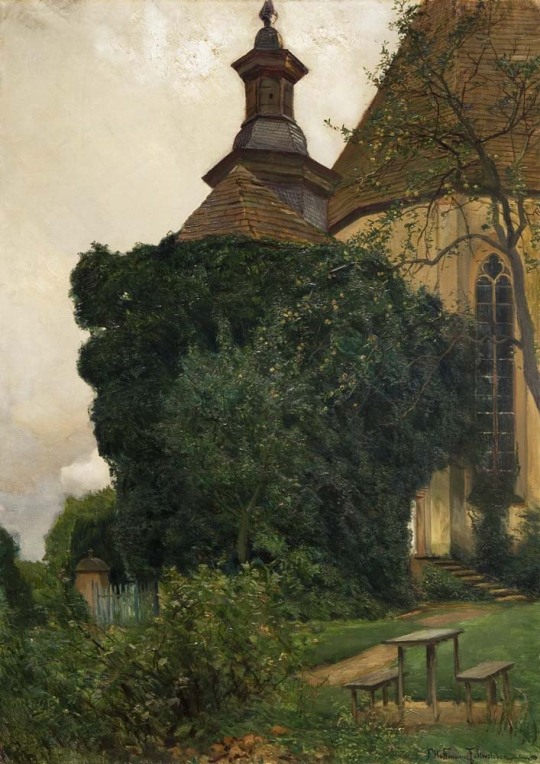
Franz Hoffmann-Fallersleben - Corvey an der Weser (1920)
658 notes
·
View notes
Text

The commemoration of all the faithful departed is celebrated by the Church on November 2, or, if this falls on a Sunday or a solemnity, the feast is celebrated on November 3.
The Office of the Dead must be recited by the clergy on this day, and all the Masses are to be of Requiem except one of the current feast, where this is of obligation.
Through prayer, intercessions, alms, and visits to cemeteries, people commemorate the poor souls in purgatory and gain them indulgences.
The theological basis for the feast is the doctrine that the souls which, on departing from the body are not perfectly cleansed from venial sins, or have not fully atoned for past transgressions, are debarred from the Beatific Vision, and that the faithful on earth can help them by prayers, almsgiving, and especially the sacrifice of the Mass.
In the early days of Christianity, the names of the departed brethren were entered in the diptychs.
Later, in the sixth century, it was customary in Benedictine monasteries to hold a commemoration of the deceased members at Whitsuntide.
In Spain, there was such a day on Saturday before Sexagesima or before Pentecost, at the time of Saint Isidore (d. 636).
In Germany, there existed (according to the testimony of Widukind, Abbot of Corvey, c.980) a time-honoured ceremony of praying to the dead on October 1. This was accepted and sanctified by the Church.
Saint Odilo of Cluny ordered that the commemoration of all the faithful departed be held annually in the monasteries of his congregation.
From here, it spread among the other congregations of the Benedictines and among the Carthusians.
Of all the dioceses, Liège was the first to adopt it under Bishop Notger (d. 1008).
It is then found in the martyrology of Saint Protadius of Besançon (1053-66).
Bishop Otricus (1120-25) introduced it into Milan for October 15.
In Spain, Portugal and Latin America, priests say three Masses on this day.
A similar concession for the entire world was asked of Pope Leo XIII; he would not grant the favour but ordered a special Requiem on Sunday, 30 September 1888.
In the Greek Rite, this commemoration is held on the eve of Sexagesima Sunday, or on the eve of Pentecost.
The Armenians celebrate the passover of the dead on the day after Easter.
Catholic Encyclopedia, copyright 1907.
9 notes
·
View notes
Text
Deutschribing Germany
Landmarks
Germany is the third country in the world with the highest number of World Heritage Sites: fifty-one in total, of which forty-eight are cultural and three are natural.

Aachen Cathedral
The Aachen Cathedral is a Roman Catholic church in Aachen, North Rhine-Westphalia. It is one of the oldest cathedrals in Europe and was consecrated in 805. Emperor Charlemagne was buried there.
The cathedral has two distinct architectural styles and small portions of a third. The core is Carolingian-Romanesque, the choir was constructed in the Gothic style, and the area around the throne is Ottonian.
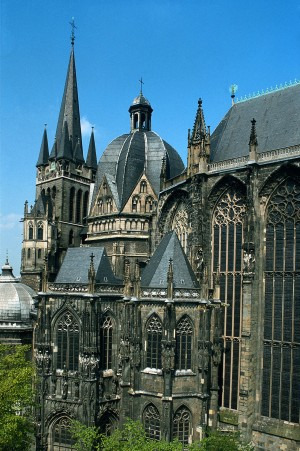
Abbey and Altenmünster of Lorsch
The Lorsch Abbey is a former imperial abbey in Lorsch, Hesse. It was founded in 764 and was one of the most renowned monasteries of the Carolingian Empire. Although in a ruined state nowadays, its remains are among the most important pre-Romanesque-Carolingian style.
The abbey combines the Roman triumphal arch (arch-shaped passageways and half-columns) with the vernacular Teutonic heritage (baseless triangles of the blind arcade and polychromatic masonry).

Ancient and Primeval Beech Forests of the Carpathians and Other Regions of Europe
The Ancient and Primeval Beech Forests of the Carpathians and Other Regions of Europe is a transnational serial nature site that includes forests in Albania, Austria, Belgium, Bulgaria, Croatia, Germany, Italy, Romania, Slovakia, Slovenia, Spain, and Ukraine.
It encompasses 94 forests of European beech, which in many cases have grown without interference since the last ice age. Those in Germany are located in Brandenburg, Hesse, Mecklenburg-Vorpommern, and Thuringia.

Archaeological Border complex of Hedeby and the Danevirke
Hedeby was an important Danish Viking Age trading settlement between the 8th and 11th centuries, now in Busdorf, Schleswig-Holstein. It was rediscovered in the late 19th century.
The Danevirke or Danework is a system of Danish fortifications in Schleswig-Holstein initiated in 650 and expanded during the Viking Age and High Middle Ages.

Bauhaus and its Sites in Weimar, Dessau and Bernau
Bauhaus and its Sites in Weimar, Thurngia; Dessau-Roßlau, Saxony-Anhalt, and Bernau bei Berlin, Brandenburg, comprises six separate sites associated with the Bauhaus art school, which was in operation between 1919 and 1933.
The buildings are fundamental representatives of Classical Modernism and Art Nouveau. Some of them were built as social housing, others operated as schools, and the rest of them were residential buildings.

Bergpark Wilhelmshöhe
Bergpark Wilhelmshöhe is a landscape park in Kassel, Hesse. It is the largest European hillside park and the second-largest park on a hill slope in the world. Construction began in 1689 and lasted 150 years.
The park has Baroque buildings and unique fountains and water features. At the summit stands the Hercules monument, a 40-meter-high pyramid with an 8.5 meter bronze statue of Hercules.

Berlin Modernist Housing Estates
The Berlin Modernist Housing Estates site comprises six separate subsidized housing estates in Berlin. It dates from the Weimar Republic (1919-1933).
The estates are examples of the building reform movement that contributed to improving housing and living conditions of people and also provide exceptional examples of new urban and architectural typologies, as well as technical and aesthetic innovations.

Carolingian Westwork and Civitas Corvey
The Princely Abbey of Corvey is a former Benedictine abbey consecrated in 844 and located in Höxter, North Rhine-Westphalia. It was one of the self-ruling princely abbeys of the Holy Roman Empire.
An example of Carolingian architecture, it is the oldest surviving example of a westwork, whose inside contains the only known wall paintings of ancient mythology with Christian interpretation in Carolingian times.

Castles of Augustusburg and Falkenlust at Brühl
The Ausgustusburg and Falkenlust Palaces form a historical building complex in Brühl, North Rhine-Westphalia. The buildings are connected by the spacious gardens of the Schlosspark.
Built in the early 18th century, the palaces and gardens are masterpieces of early Rococo architecture. They are now used as a venue for concerts.

Caves and Ice Age Art in the Swabian Jura
The Caves and Ice Age Art in the Swabian Jura are a collection of six caves in the Swabian Alps, in Baden-Württemberg, which were used by Ice Age humans for shelter about 33,000 to 43,000 years ago.
Within the caves were found the oldest non-stationary works of human art in the form of carved animal and humanoid figurines, in addition to the oldest musical instruments ever found.

Classical Weimar
Classical Weimar consists of eleven sites in and around Weimar, Thuringia. The city was a cultural center of the Enlightenment during the 18th and 19th centuries, where many notable writers and philosophers, including Christoph Martin Wieland, Friedrich Schiller, John Gottfried Herder, and Johann Wolfgang von Goethe, lived and participated in the Weimar Classicism movement.
It includes the church of St. Peter and Paul, Duchess Anna Amalia Library, Goethe's house, Herders residence, the historical cemetery, Park an der Ilm, Schiller's house, Schloss Belvedere, Schloss Ettersburg, Schloss Weimar, Tiefurt House, Wilhelm-Ernst-Gymnasium, and Wittumspalais.

Collegiate Church, Castle, and Old Town of Quedlinburg
Quedlinburg was an influential and prosperous trading center during the early Middles Ages and a center of influence under the Ottonian dynasty.
Quedlinburg Abbey was a house of secular canonesses in Quedlinburg, Saxony-Anhalt. It was founded in 936 on the initiative of Saint Mathilda, the widow of King Henry the Fowler, as his memorial. The castle, abbey, church, and surrounding buildings are masterpieces of Romanesque architecture.

Cologne Cathedral
The Cologne Cathedral is a Catholic cathedral in Cologne, North Rhine-Westphalia. Construction began in 1248 but was halted in 1560; the cathedral was not completed until 1880.
It is a renowned monument of Gothic architecture and the largest Gothic church in Northern Europe, with the second-tallest spires. It is also the third-tallest church in the world.

Darmstadt Artists' Colony Mathildenhöhe
The Darmstadt Artists' Colony refers to a group of Jugendstil artists as well as to the buildings in Mathildenhöhe in Darmstadt, Hesse, where the artists lived in the 19th and 20th centuries.

They were financed by patrons and worked together with other members of the group with similar artistic tastes.
Erzgebirge/Krušnohoří Mining Region
The Ore Mountains—Erzgebirge in German and Krušnohoří in Czech—lie along the Czech-German border in Bohemia and Saxony, respectively, and the site is shared between the Czech Republic and Germany.

The region was the setting of the earliest stages of the early transformation of mining and metallurgy from a craft to a large-scale industry. As a result, mining directly shaped the landscape and the habitats of plants and animals.
Fagus Factory in Alfeld
The Fagus Factory is a shoe last factory in Alfeld on the Leine, Lower Saxony. It is an important example of early modern architecture.

The factory was commissioned by Carl Benscheidt, who wanted a radical structure that expressed the company's break from the past. It was built between 1911 and 1913.
Frontiers of the Roman Empire
Limes is the term used to refer to the Germanic border defense or delimiting system marking the borders of the Roman Empire and separating the empire from the unsubdued Germanic tribes between the years 83 and 260.
The Limes Germanicus are the fortifications that bounded the ancient Roman provinces of Germania Inferior, Germania Superior, and Raetia, in modern-day southwestern North Rhine-Westphalia and southwestern and southern Germany. Their total length was 568 km, and they included sixty forts and 900 watchtowers.
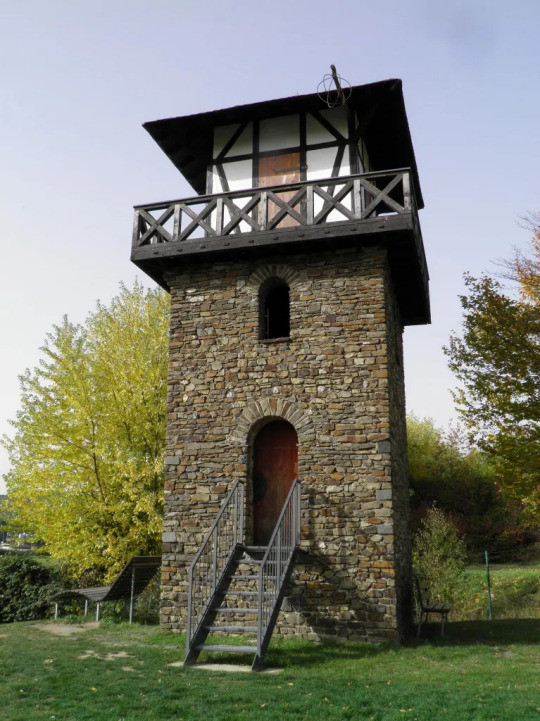
Frontiers of the Roman Empire in Bavaria
The Danubian Limes refers to the Roman military frontier along the Danube in Bavaria, as well as Austria, Bulgaria, Croatia, Hungary, Romania, Serbia, and Slovakia.
The border was reinforced with watchtowers, legion camps, and forts built around the first century. A Roman road, the Danube Way, was laid along the limes.

Garden Kingdom of Dessau-Wörlitz
The Dessau-Wörlitz Garden Realm is a cultural landscape between Dessau and Wörlitz in Saxony-Anhalt. It was created in the late 18th century and is one of the largest English parks in continental Europe.

It was designated as a world heritage site because of its exceptional landscape design and testimony to the ideals of the Enlightenment Age.
Great Spa Towns of Europe
The Great Spa Towns of Europe is a transnational site that includes eleven spa towns across several European countries, namely, Austria, Belgium, Czech Republic, France, Germany, Italy, and the United Kingdom.
Those in Germany are Bad Ems, Rhineland-Palatinate; Baden-Baden, Baden-Württemberg, and Bad Kissingen, Bavaria. All the spa towns were developed around natural mineral water springs.

Hanseatic City of Lübeck
The Hanseatic City of Lübeck, located in Schleswig-Holstein, is the second-largest city on the German Baltic coast. It was founded before 819 by Polabian Slavs and became the cradle and capital city of the Hanseatic League.
Nicknamed the "City of Seven Towers", its historic old town includes five Protestant churches with seven towers: the Lübeck Cathedral, St. Giles's, St. Jacob's, St. Mary's, and St. Peter's, as well as the Burgkloster, the Koberg site, the town hall, and the market square.

Historic Centers of Stralsund and Wismar
The Hanseatic City of Stralsund is located in Mecklenburg-Western Pomerania and is the oldest city in Pomerania. The Strelasund Crossing connects the city with Rügen, the largest island of Germany. Its old town was inscribed as a UNESCO World Heritage Site alongside Wismar because of its Brick Gothic buildings and importance in the Hanseatic League.
The Hanseatic City of Wismar is also located in Mecklenburg-Western Pomerania. Its historical old town includes the churches of St. George's, St. Mary's, and St. Nicholas's.
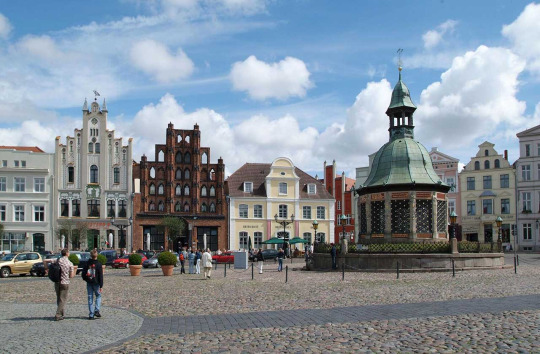
Luther Memorials in Eisleben and Wittenberg
Eisleben, in Saxony-Anhalt, was the hometown of Martin Luther, and he even preached his last sermon and died there. His Birth and Death houses are a UNESCO World Heritage Site. The town was first mentioned in the late 10th century.
Wittenberg is also famous for its close connection with Luther, as he lived in the Augustinian monastery. It was also one of the most powerful cities in the Holy Roman Empire as the seat of the Elector of Saxony.

Margravial Opera House Bayreuth
The Margravial Opera House is a Baroque opera house in Bayreuth, Bavaria. It was constructed according to the plans designed by the French architect who built the court of Hohenzollern margrave Frederick of Brandenburg-Bayreuth.
The façade was inspired by the Place Vendôme in Paris and has large Corinthian columns. A balustrade is stretched across the façade, with sculptures of Apollo, Minerva, and six Muses placed atop.

Maulbronn Monastery Complex
The Maulbronn Monastery is a former Cistercian abbey and ecclesiastical state in Maulbronn, Baden-Württemberg.

Founded in 1147, the complex is surrounded by turreted walls and a tower gate. Today it houses the town hall and a police station. The monastery contains an Evangelical seminary and a boarding school.
Messel Pit Fossil Site
The Messel pit is a quarry near Messel, in Hesse. Before it fell into disuse, bituminous shale was mined there. Besides its mineral significance, it also has significant geological and scientific importance due to the abundance of well-preserved fossils and diversity of plants and animals found there.

The site almost became a landfill, but strong local resistance stopped these plans and the site was declared a World Heritage Site. Since then, discoveries about the early evolution of mammals and birds are still being made.
Mines of Rammelsberg, Historic Town of Goslar and Upper Harz Water Management System
The Rammelsberg is a mountain south of Goslar, Lower Saxony, where an important silver, copper, and lead mine is located. Before its closure in 1988, it was the only mine still working continuously for over 1,000 years.
Goslar's political importance for the Holy Roman Empire and its testimony to the history of ore mining contributed to making them a UNESCO World Heritage Site. The Upper Harz Water Regale is a system of dams, reservoirs, and ditches built between the 16th and 19th centuries to store the water that drove the water wheels of the mines, including those in Rammelsberg.

Monastic Island of Reichenau
The Reichenau Island is located in Lake Constance, Baden-Württemberg. It is connected to the mainland by a causeway and a low road bridge.
In 724, the first monastery was built on the island, and Reichenau became an influential religious, cultural, and intellectual center. The Reichenau Abbey was one of the most significant monasteries in the Frankish Empire.

Museum Island, Berlin
The Museum Island in Berlin is a museum complex on the northern part of the Spree Island. It was built between 1830 and 1930 by order of the Prussian kings.
The island consists of the Altes Museum (old museum), Neues Museum (new museum), Alte Nationalgalerie (old national gallery), the Bode-Museum, and the Pergammonmuseum, as well as the Berlin Cathedral.
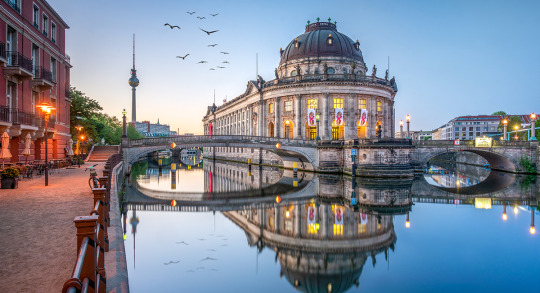
Muskauer Park/Park Mużakowski
The Muskau Park—Muskauer Park in German and Park Mużakowski in Polish—is a landscape park in Upper Lusatia, a region between Germany (Saxony) and Poland.
The site forms the largest English gardens in Central Europe and was laid out from 1815 onward. Its utopian design incorporates both native plants and the nearby town.
Naumburg Cathedral
The Naumburg Cathedral is located in Saxony-Anhalt. It dates from the 13th century and is a renowned landmark of the German Romanesque.
The west choir, the donor portrait statues of the twelve founders, and the rood screen are significant early Gothic monuments.
Old Town of Regensburg with Stadtamhof
Regensburg, in Bavaria, was an imperial Roman river fort and the political, economic, and cultural center of the surrounding region.
Its medieval center was made a World Heritage Site because of its well-preserved architecture, being the biggest medieval city north of the Alps, and historical importance for assemblies during the Holy Roman Empire.
Palaces and Parks of Potsdam and Berlin
The Palaces and Parks of Potsdam and Berlin site is a group of palace complexes and landscaped gardens in the Havelland region around Berlin and Potsdam.
Among others, the site includes the Palace and Park of Sanssouci, Neuer Garten (New Garden), Marmorpalais (Marble Palace), Cecilienhof Palace, Glienicke Palace, Park Glienicke, Nikolskoe log house, Pfaueninsel (Peacock Island), and Jagdschloß Glienicke (Glienicke hunting lodge).
Pilgrimage Church of Wies
The Pilgrimage Church of Wies is an oval Rococo church located in the foothills of the Alps in the town of Steingaden, Bavaria. It was built in the late 1740s by the Zimmermann brothers after a miracle allegedly happened there.
In 1738, tears were seen on a wooden figure of Christ at the Column. This resulted in a pilgrimage rush to see the sculpture, which led to the construction of a small chapel to house the statue. The chapel was soon expanded due to the large number of pilgrims it attracted.
Prehistoric pile dwellings around the Alps
The prehistoric pile dwellings around the Alps are a series of prehistoric stilt houses settlements in the Alps built between 5,000 and 500 BCE on the edges of lakes, rivers, or wetlands.
The UNESCO site includes 111 dwellings in Switzerland (56), Italy (19), Germany (18), France (11), Austria (5), and Slovenia (2). Excavations conducted at some of the sites have yielded important evidence regarding prehistoric life.
Roman Monuments, Cathedral of St. Peter and Church of Our Lady in Trier
The Roman Monuments, Cathedral of St. Peter and Church of Our Lady in Trier, Rhineland-Palatinate, demonstrate the political, economic, and historical importance of Trier in the Roman Empire.
The site includes the Aula Palatina, Barbara Baths, Church of Our Lady, High Cathedral of Saint Peter, Igel Column, Imperial Baths, Moselle Bridge, and Porta Nigra.
ShUM cities of Speyer, Worms and Mainz
The ShUM cities site refers to three Jewish communities in Rhineland-Palatinate: Shpira (Speyer), Warmaisa (Worms), and Magenza (Mainz). They were cultural centers of Jewish scholarship and of great importance for Ashkenazi Judaism.
Speyer contains some of the oldest and best-preserved Jewish buildings in its Jewish courtyard, while Worms has the oldest surviving in situ cemetery in Europe. Unfortunately, the city of Mainz, like many other places around the world, was the site of persecution and massacres against Jewish people.
Speicherstadt and Kontorhaus District
The Speicherstadt ("City of Warehouses") and Kontorhaus District are located in Hamburg. The Speicherstadt, where buildings stand on oak-pile foundations, is the largest warehouse district in the world. An example of Neo-Gothic and modernist architecture, the district was built as a free zone to transfer goods without paying customs.
The Kontorhaus District is the southeastern part of the old town. It is characterized by large office buildings in the style of Brick Expressionism. The area is densely built-up with many narrow alleys.
Speyer Cathedral
The Imperial Cathedral Basilica of the Assumption and St. Stephen is located in Speyer, Rhineland-Palatinate. The cathedral was built in the 11th century and features a triple-aisled vaulted basilica of red sandstone.
It is the largest Romanesque church in the world and is the burial site of several Salian, Hohenstaufen, and Habsburg emperors and kings.
St. Mary's Cathedral and St. Michael's Church at Hildesheim
The Cathedral of the Assumption of Mary is a medieval Roman Catholic cathedral in Hildesheim, Lower Saxony. It was built between 1010 and 1020 in the Romanesque style.
The Church of St. Michael is an early-Romanesque church in Hildesheim. Built in the 11th century, it is now a shared church, the main church being Lutheran and the crypt being Roman Catholic.
The Architectural Work of Le Corbusier, an Outstanding Contribution to the Modern Movement
The Architectural Work of Le Corbusier site consists of seventeen Modernist buildings in three continents by architect Le Corbusier.
The Weissenhof Estate is a housing estate in Stuttgart, Baden-Württemberg, and one of Le Corbusier's designs. It was built for an exhibition to showcase modern architecture's aspiration to provide cheap, simple, efficient, and good-quality housing.
Town Hall and Roland on the Marketplace of Bremen
The Bremen City Hall is one of the most important examples of Brick Gothic and Weser Renaissance architecture in Europe. Built in the 15th century, it is located on the market square.
Directly in front of it is the statue of Roland, which depicts the paladin of the first Holy Roman Emperor Charlemagne and hero of the Battle of Roncevaux Pass. It was erected in 1404 and the oldest surviving example.
Town of Bamberg
Bamberg is a town in Bavaria that dates back to the 9th century. It was a key link with the Slavs, especially those of Pomerania and Poland, and was briefly the center of the Holy Roman Empire.
Its medieval streets and buildings and historical significance were behind its designation as a UNESCO World Heritage Site.
Upper Middle Rhine Valley
The Upper Middle Rhine Valley or Rhine Gorge is a 65 km section of the Rhine between Koblenz and Rüdesheim in Rhineland-Palatinate and Hesse.
The rocks that form the landscape were laid down during the Paleozoic era and are known as Rhenish Facies, a type of fossil-bearing sedimentary rock mainly consisting of slate.
Völklingen Ironworks
The Völklingen Ironworks is a former blast-furnace complex in Völklingen, Saarland. Pig or crude iron production occurred at the site between 1882 and 1986.
It is one of the few intact ironworks surviving in Europe and North America and a testimony to ferrous metallurgy and the Industrial Revolution.
Wadden Sea
The Wadden Sea is an intertidal zone in the southeastern part of the North Sea, which borders Bremen, Hamburg, Lower Saxony, and Schleswig-Holstein.
It lies between northwestern continental Europe and the low-lying Frisian Islands, forming a shallow body of water with tidal flats and wetlands. The site has a high biological diversity and is an important area for breeding and migrating birds.
Wartburg Castle
The Wartburg is a medieval castle in Eisenach, Thuringia. It was the home of St. Elisabeth of Hungary and the place where Martin Luther translated the New Testament.
The castle's structures date from the 12th through 15th centuries, but the interior only goes back to the 19th century. It was an important inspiration for the Neuschwanstein Castle.
Water Management System of Augsburg
The Water Management System of Augsburg is located in the city of Augsburg, Bavaria, which is one of Germany's oldest cities, founded by the Romans.
The city's water management system has unique medieval canals and water towers and is testimony to the development of hydraulic engineering.
Würzburg Residence with the Court Gardens and Residence Square
The Würzburg Residence is a palace in Würzburg, Bavaria, whose interiors are masterworks of Baroque and Rococo architecture and art, including the largest fresco in the world.
Built in the 18th century, the residence includes large gardens in the Baroque and English garden styles.
Zollverein Coal Mine Industrial Complex
The Zollverein Coal Mine Industrial Complex is a former industrial site in Essen, North Rhine-Westphalia. The first mine was founded in 1847 and the last one closed in 1986.
The two parts of the site ranked among the largest of their kinds in Europe and were built in the New Objectivity style.
12 notes
·
View notes
Photo









A stimboard for a member named Corvey with crow themed stims in black + purple for @the-galaxy-sys !
- Mod Primarina + Mod Jules + Mod Khonjin.
((Sources of gifs: x, x, x, x, x, x, x, x, x ))
#Stim#Stimmy#Sensory#Ours#IRL Animals#Birds#Crows#Crystals#Gemstones#Shiny#Black#White#Purple#Hands#Stimboard#Gif
113 notes
·
View notes

